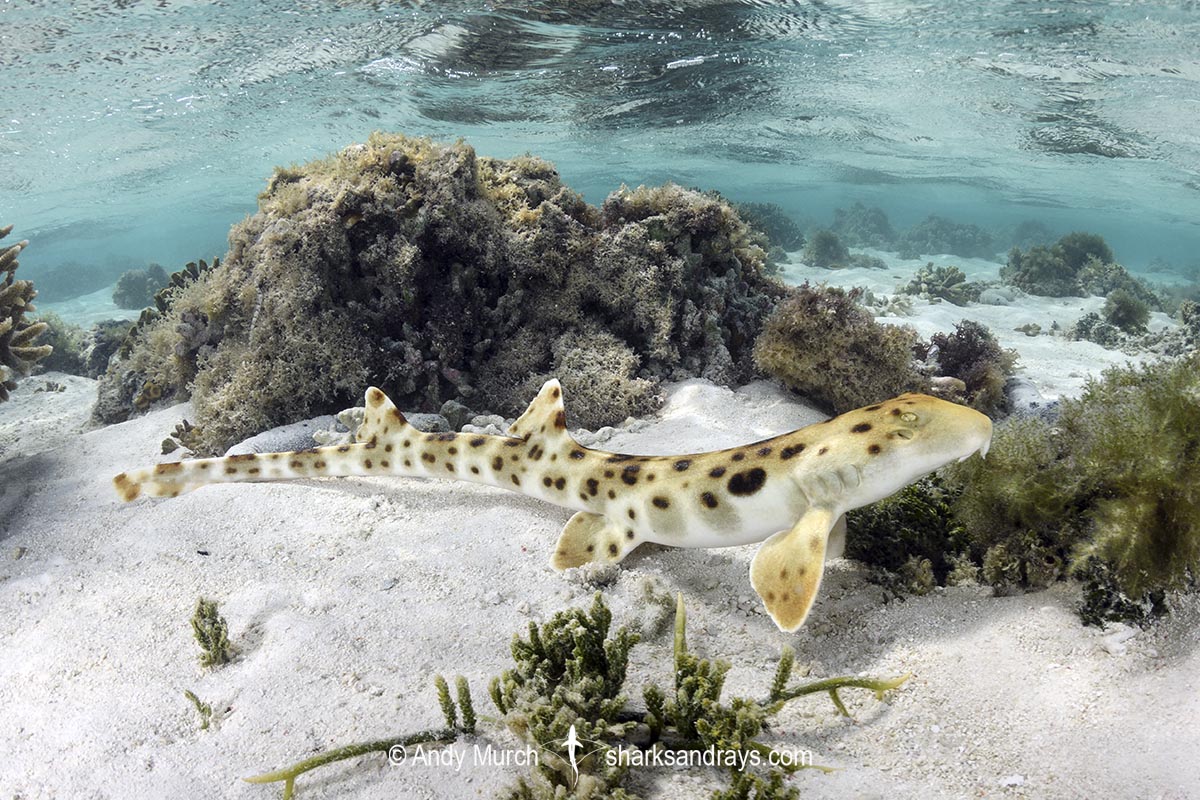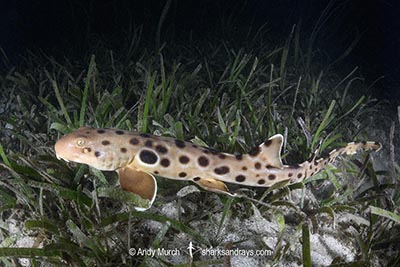Common names
Epaulette Shark, Common Epaulette Shark.
Binomial
Hemiscyllium ocellatum.
Synonyms
Squalus ocellatus, Squalus oculatus.
Identification
Elongated, slender body. Well developed pectoral and pelvic fins on fore-body (used partially for walking). Two equally sized dorsal fins on rear-body. Tail long and straight with upper and lower caudal lobes on underside. Sub-terminal notch present.
Dorsal coloration pale with yellowish-brown saddles and a pattern of small black ovoid spots from forehead to tail. Large, well-defined, round or ovoid black ocelli (sometimes ringed in white) above pectoral fins. Ventrum pale.
Size
Maximum size 107cm. Max size varies by region.Max size at Heron Island 76cm. Size at birth 14-16cm.

Conservation Status
LEAST CONCERN
The Epaulette Shark (Hemiscyllium ocellatum) mostly occurs within protected areas of the Great Barrier Reef where there is no fishing pressure except for a small amount of collection for private aquariums.
The subpopulation in Papua New Guinea is assessed as ‘Near Threatened’ by the IUCN due to habitat degradation from destructive fishing practices (dynamite fishing) and pollutants.

Habitat
Shallow reef flats and inshore areas. From the intertidal zone to ~40m, on or near the bottom.
Distribution
Mostly Northern Australia from northern WA to NSW. Abundant in parts of the Great Barrier Reef. Rarely, as far south as Sydney. Also found in southern Papua New Guinea.
Reproduction
Oviparous. Mating occurs from July-November. Females have been observed carrying two egg capsules between August and December. Egg capsules are deposited on the reef at night. Hatching occurs after 4 months.
Diet
Mostly worms but also crustaceans and small fishes.
Behavior
Mostly Nocturnal. Rests by day in crevices on the reef or under corals. Forages in sand channels between coral heads at low tide when the reef top is exposed and larger predatory sharks retreat to deeper water.
Reaction to divers
Fairly easy to approach when foraging in shallow sand channels or resting on coral. Will move away if approached too closely.
Diving logistics
The most abundant and accessible population of epaulette sharks is at Heron Island in southern Queensland. Encounters are easiest by walking along narrow sand channels between coral heads at low tide and then hand-camming rather than snorkeling because the water in the sand channels is often too shallow to completely submerge in. Note: epaulette sharks are rarely seen on scuba dives at Heron.
Lady Elliot Island is another good location similar to Heron Island. Further north, Magnetic Island was historically quite good for encounters, but deposits of dredged material from Townsville has degraded the reef habitat and visibility is usually very poor.
What’s new
View our full list of updates
Similar species
Papuan Epaulette Shark distinguished by larger spots that start behind the eyes, and geographic range; PNG endemic.




